
Episode 53 – The Failure To Communicate
What we have here, is failure to communicate. That is one of my favorite lines from any movie. That movie of course is Cool Hand Luke. And if you’ve never […]
 play_arrow
play_arrow
Episode 119 – (Interview) with Sheila Butler – Founder and CMO of Butler Marketing Group admin
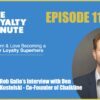 play_arrow
play_arrow
Episode 118 (Interview) with Dan Kustelski – Co-Founder of Chalkline admin
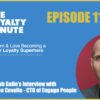 play_arrow
play_arrow
Episode 117 (Interview) with Len Covello – CTO of Engage People admin
 play_arrow
play_arrow
Episode 116 – (Interview) with Lee-Ann Johnston – Founder of AffiliateINSIDER admin
 play_arrow
play_arrow
Episode 115 – (Interview) with John Bertino – Owner and Founder of The Agency Guide admin
 play_arrow
play_arrow
Episode 114 – (Interview) With Nick Ewen – Director of Content for The Points Guy admin
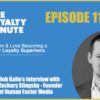 play_arrow
play_arrow
Episode 110 – (Interview) with Zachary Slingsby – Founder of Human Factor Media admin
 play_arrow
play_arrow
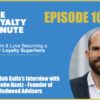 play_arrow
play_arrow
Episode 108 (Interview) with John Nantz – Founder and Strategy Consultant at Redwood Advisors admin
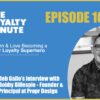 play_arrow
play_arrow
Episode 107 (Interview) with Bobby Gillespie Founder and Principal at Propr Design admin
 play_arrow
play_arrow
Episode 106 (Interview) With Brandon Ehrhardt – Senior Director of Partner Programs at Expedia Group admin
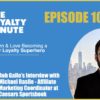 play_arrow
play_arrow
Pegasystems Inc. is a leading software provider for customer engagement and intelligent automation headquartered in Cambridge, Massachusetts with offices around the world. Pega says its “adaptive, cloud-architected software – built on its unified Pega Platform – empowers people to rapidly deploy and easily extend and change applications to meet strategic business needs.”
We at Loyalty360 recently had the opportunity to talk with Mike Asebrook, Director of Product Marketing for Pega. Asebrook provided some background on Pega and discussed the use of data, how the company differentiates itself from competitors, and more.
Can you give us an understanding of what Pega does and how they do it?
Pega has been around close to 35+ years – and grown pretty rapidly over the past few years. Now we’re the leader in cloud software for customer engagement and operational excellence.
They have been very strategic with a lot of strategic acquisitions along the way – whether it’s through AI, which has given us Next Best Action, whether it’s robotic automation, whether it’s digital messaging – so we’ve really grown from traditionally a BPM (Business Process Management) solution company to this full-fledged customer engagement software company that still has that unique balance of customer engagement and robotic automation.
So those two really balance the sides, with a centralized AI hub right in the middle that’s really used a lot for whatever we do. If you look at Pega, where I focus is on the CRM customer engagement suite of offerings – so that includes customer service, sales automation, and then our marketing applications. A lot of that is all built on the Pega platform with our strengths, with case management, with AI, with robotic automation – and we’ve really been able to expand our use cases and our verticals.
We lead with terrific out-of-the-box case types, making it really easy for our agents, whether they’re servicing insurance, financial services, manufacturing, government, healthcare … and that’s really where I feel like we differentiate ourselves on scale. And we deliver those to some of the biggest enterprises out there. We’ve had a massive head-start with our AI-infused Next Best Action, in that we’ve now done this for over 10 years with 200 deployments. Our ability to rely on a single unified platform to quickly adapt where things are headed has enabled us to be more agile and deal with complexity than other solutions in the market.
Where do you get your data from for Next Best Action?
It could be all data, all touch points. It could be from third party as well. We’re really getting into more open AI – and to be able to do that in real time – to be able to take in all the data, be able to analyze and be able to sense what those triggers are – and use a combination of predictive and adaptive analytics to be able to deliver the next best action or outcome for your business and also for your customer.
How do you think you are different than the competitors?
I think there are a number of things. First and foremost, our heritage of being around for 35 years – staying ahead of the technology trends, starting out as a BPM company and then morphing into a Digital Customer Engagement platform to deliver this seamless unified experience from end to end through multiple verticals that no one else has. Our competitors may do a piece of that, but not from end-to-end across the vertical depth we have within the Enterprise. And speaking of Enterprise, Pega has remained in this space since the beginning and knows it well. A lot of our competitors have moved up from midmarket … up to enterprise or perhaps from IT service management to what we do – and it’s not the same thing.
So that advantage and knowledge along with being more goal based, rather than being more task and ticketing based, gives customers and businesses that full end-to-end experience across all data and touchpoints.
In addition, a lot of our competitors also say that they have low code offerings, where they make it easier for businesses to create apps. And we find that low code to them still means coming with a team of 50 engineers and six months to add code to really do that. And that’s not low code. So we’re really focused more on the citizen developer to be able to create those apps and really be able to make it easy, customized, have a great out-of-the-box solution, but also to be able to do any sort of changes along the way.
If you look on our website, we’re all about build for changeä, and the ability to adapt and make it easy and make it frictionless and make it simple. We’re right in the middle of a SaaS based transition within the company – making it easy, faster to deploy, along with the ability to go large but also adapt and move along the way much faster than our competitors. We don’t want to overwhelm businesses, and this all goes back to, I believe, what digital transformation is all about. It’s not this flip the switch and you’re on. It’s this continuous process. And we’ve helped so many enterprises along the way be able to chip away at it, but really have this end-to-end vision and really have that outside-in kind of view of what it means for true digital transformation.
Source link

What we have here, is failure to communicate. That is one of my favorite lines from any movie. That movie of course is Cool Hand Luke. And if you’ve never […]
You can see how this popup was set up in our step-by-step guide: https://wppopupmaker.com/guides/auto-opening-announcement-popups/
I do the podcast commercial free and with no sponsors. If you’d like to show your support for the program, you can buy me a cup of coffee.☕️
The caffeine keeps me going!
You can see how this popup was set up in our step-by-step guide: https://wppopupmaker.com/guides/auto-opening-announcement-popups/